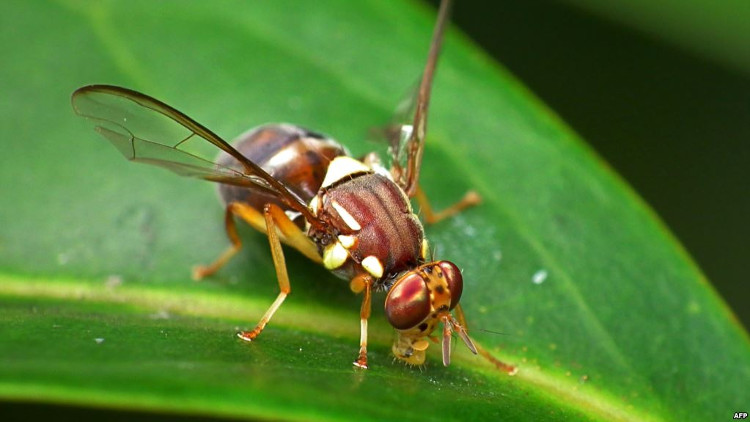Successfully decipher the visual network of the fruit fly larvae brain
A group of Swiss researchers deciphered the entire visual network in the fruit fly's brain. This success will open up the prospect of re-appearing as the information network in the human brain.
The results of this study have been published in eLife Sciences magazine.
The team of scientists led by Simon Sprecher of the University of Friborg succeeded in decoding the entire visual network in the brain of a fruit fly larvae of 130 cells, equivalent to 6% of the fly's entire brain.

The visual network in the brain of a fruit fly larva consists of 130 cells, equivalent to 6% of the fly's entire brain.
With about 2,000 cells, the fruit fly larva brain is much smaller than a brain of a mature fruit fly with 150,000 cells. Meanwhile, this number in the human brain is about 80 billion cells.
However, these flies are suitable for basic brain research because the nervous system is greatly simplified and the time for reproduction is short.
The next phase is to study how this network affects behavior, which cells will receive information such as light or heat, as well as how to receive information.
According to scientists, the long-term goal of a precise rearrangement of the neural cell network with connection points is to be able to reproduce the information network in the brain of the fruit fly and later the human brain.
- Unexpected discoveries of tiny fruit flies
- The brain can 'look' even though the eyes cannot see
- Discover the brain's imaginary origins
- The study successfully created artificial cerebellum
- Roll on all kinds of visual illusions that cheat the brain
- Kill the larvae with ... bacteria
- Japan has found a killer for dengue larvae
- Surprise with the effects of the fruit
- Cocoa is good for sight and brain
- Not Zika but Monsanto's chemicals cause brain atrophy?
- Close-up of the human brain is 'sliced' newly announced
- 15 kinds of fruits in Vietnam are listed in the 25 most exotic fruits in the world
 Why do potatoes have eyes?
Why do potatoes have eyes? 'Tragedy' the world's largest carnivorous life: Death becomes ... public toilet
'Tragedy' the world's largest carnivorous life: Death becomes ... public toilet Tomatoes were once considered 'poisonous' for 200 years
Tomatoes were once considered 'poisonous' for 200 years Detecting microscopic parasites on human face
Detecting microscopic parasites on human face